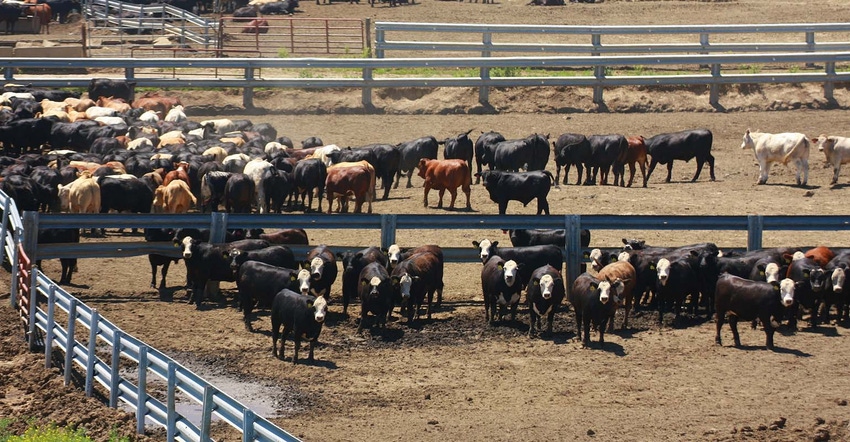May 10, 2017

Liver abscesses are a value robber in feedlot cattle that's not immediately apparent.
"The toughest losses to control are often the ones we cannot see," said Warren Rusche, SDSU Extension Beef Feedlot Management Associate. "Even though cattle producers can't tell by looking if cattle have liver abscesses, the problem is certainly visible at the packing plant and in lost profit opportunities."
In addition to the most obvious losses - condemned livers, resulting in about $10 to $16 per head lost export value - Rusche explained that other profit robbers can include:
Poorer feedlot performance and efficiency
Reduced carcass weights and increased trimming losses
Reduced output and capacity at the packing plant
Liver abscesses are caused by the same pathogenic bacteria responsible for footrot.
"A key contributing factor to the development of liver abscesses is damage to the cells lining the rumen wall due to excessive acid load or other physical irritants," Rusche said.
He explained that the irritation allows for these pathogens to pass from the rumen to the portal blood and eventually to the liver.
Incidence rates of liver abscesses in beef cattle average roughly 15%, with some variation, depending on sex and geographical region.
"Recently there has been a marked increase in the level of liver abscesses in Holstein steers with infection rates increasing from 12% in 2003 to as much as 55% in 2013," Rusche said. "This could be related to the fact that dairy steers are typically fed a high concentrate diet for a longer period of time compared to beef breeds."
Feeding antibiotics is the most common method of controlling liver abscesses in feedlot cattle in the U.S., Rusche explained. With the most commonly used product today is tylosin.
Research shows that tylosin is effective in reducing the incidence of liver abscesses by about 40% to 70% compared to untreated cattle.
"Keep in mind that feeding tylosin does require a Veterinary Feed Directive in order to be used in feedlot diets," Rusche said.
The combination of VFD requirements as well as increased scrutiny of antibiotic usage in livestock diets in general has led to increased interest in control measures that do not rely on antimicrobials.
"Strategies such as feeding essential oils and vaccinating against F. necrophorum have been studied, but unfortunately, these approaches have not been consistently effective," Rusche said.
He added that this will be an active area of research now and in the future to increase the options available to control liver abscesses.
Management Tips
As with most diseases and production issues, management plays a critical role in reducing the incidence and negative impact of liver abscesses.
"Acidosis and increased risk of liver abscesses usually go hand in hand," Rusche said.
Management practices that reduced the risks of acidosis and other metabolic disorders include:
Avoid stepping up cattle to high starch diets too rapidly;
Minimize daily feed intake variation; and
Make sure there is adequate effective fiber in the diet. Finely ground roughage does not promote sufficient rumination and saliva production to help buffer rumen pH.
Source: SDSU Extension
You May Also Like




